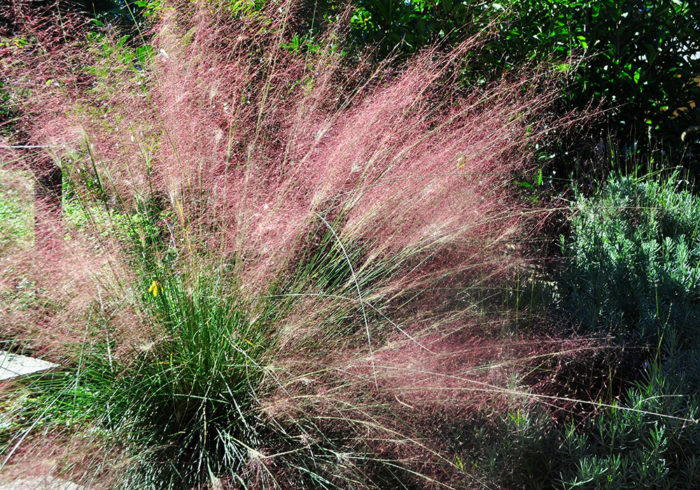
Wispy, billowy, airy, feathery, wavy—these are just some of the words we use to describe ornamental grasses. So often, though, grasses are stripped of all these adjectives by incorrect trimming.
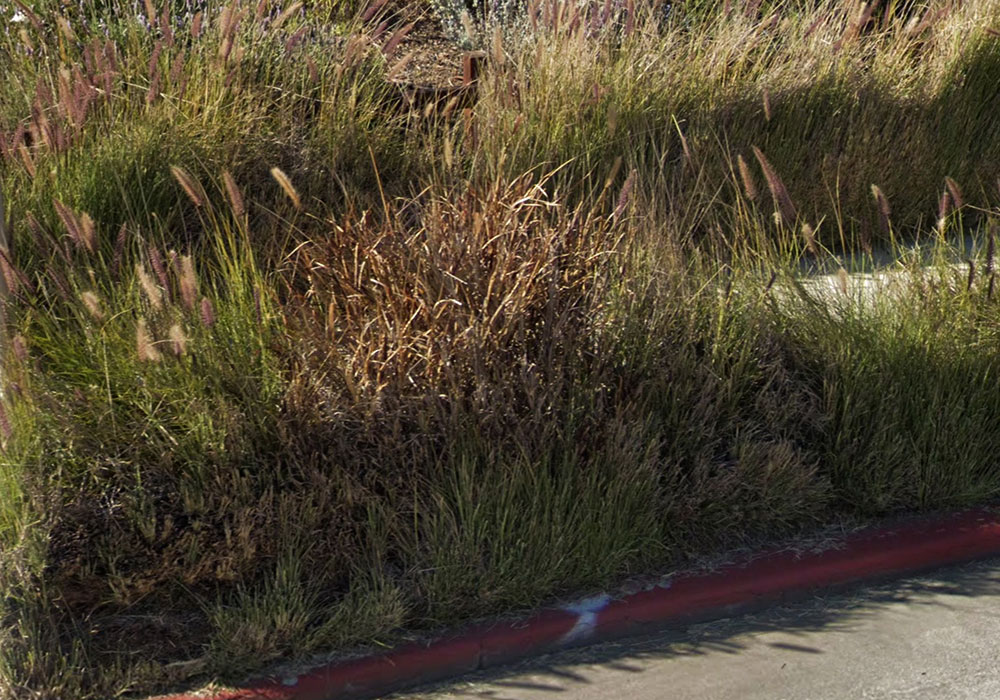
When it comes to trimming, I find that grasses are one of the most mistreated plants. So many people don’t understand the fine art of trimming grasses. All too often they are just sheared up the sides and then across the top. Bim, bam, boom, done! Sometimes more care is given, and they are trimmed into little rounded meatballs. Grasses should not be trimmed into a shape. First of all, the amount of time it takes to trim the top, then trim all the four sides, then round out all the edges into a ball is much more than you need to spend. Second—and this is mainly in the case of smaller grasses—when you trim grasses into balls or squares, you are highlighting all the dead blades. It just completely defeats the purpose of having a nice, airy grass.
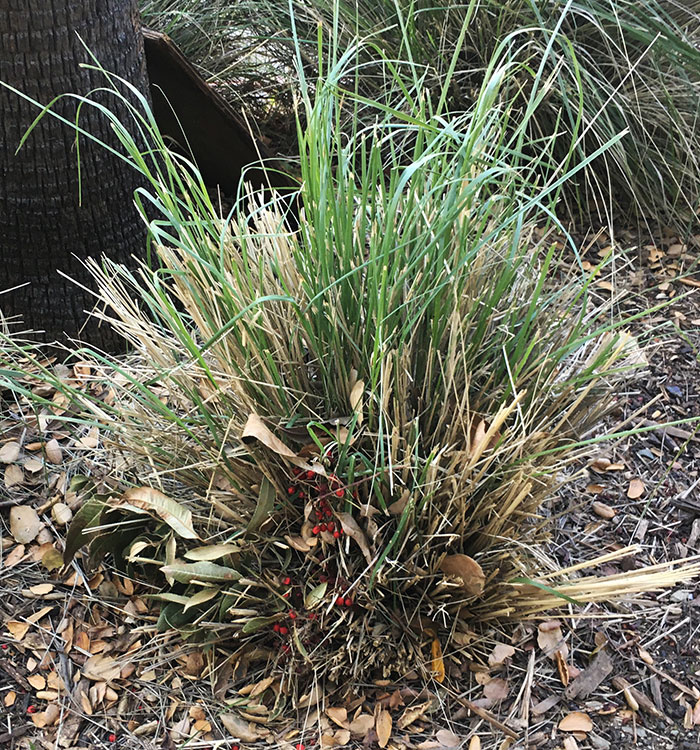
In our climate, grasses go completely dormant much less often and for less of the year than in colder climates, and most start pushing out new growth around this time of year. By trimming back grasses, we can remove both dead growth and weeds lurking beneath.
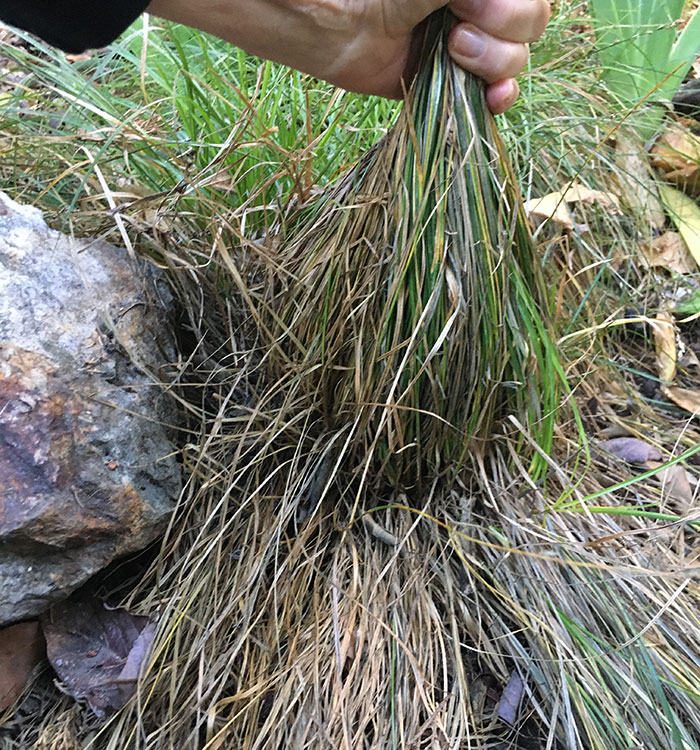
The ideal way to trim grasses is by gathering all the blades and holding them upright, much like gathering hair into a ponytail, then shearing them straight across. If you’re working with a large species of grass, you can tie it up with a rope to hold it in place before cutting below the rope. I have also seen this done using a 2-foot bungee cord. The benefit of this method is that it is easy to wrap the cord around tightly and then quickly hook it into place.
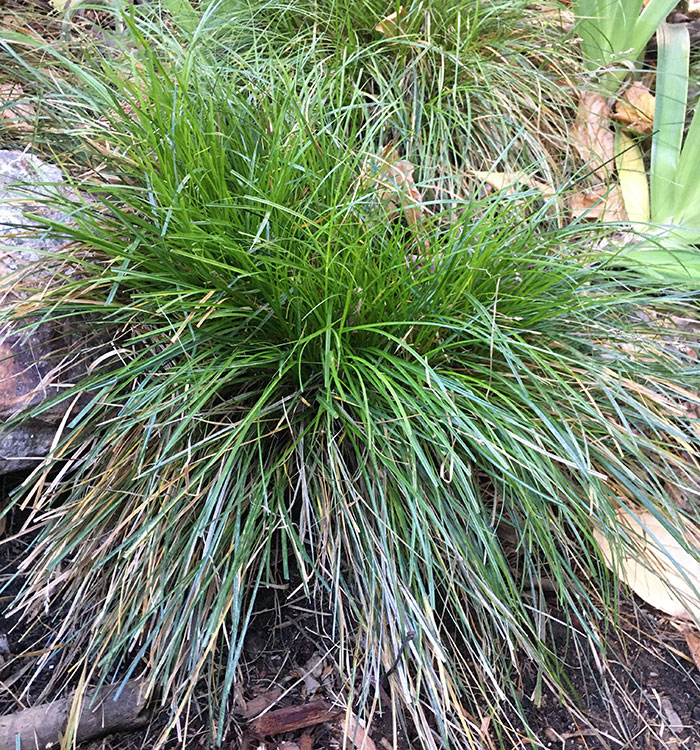
By cutting grasses this way, you are giving them a nice haircut. Cleanup is much easier this way, and by trimming straight across and then letting the grass fall over, you let it keep its natural form. How high to trim depends on the grass, how much new growth is showing, and how high that new growth is. It could be anywhere from a few inches to a foot. If you are trimming back small grasses, such as sedges (Carex spp. and cvs., Zones 3–10), hand pruners do the job most effectively. For larger grasses, you can use hand pruners, shears, or a battery-operated trimmer. Trimming time also provides a good opportunity to divide or transplant any new grasses that have sprung up from rhizomes or seeds.
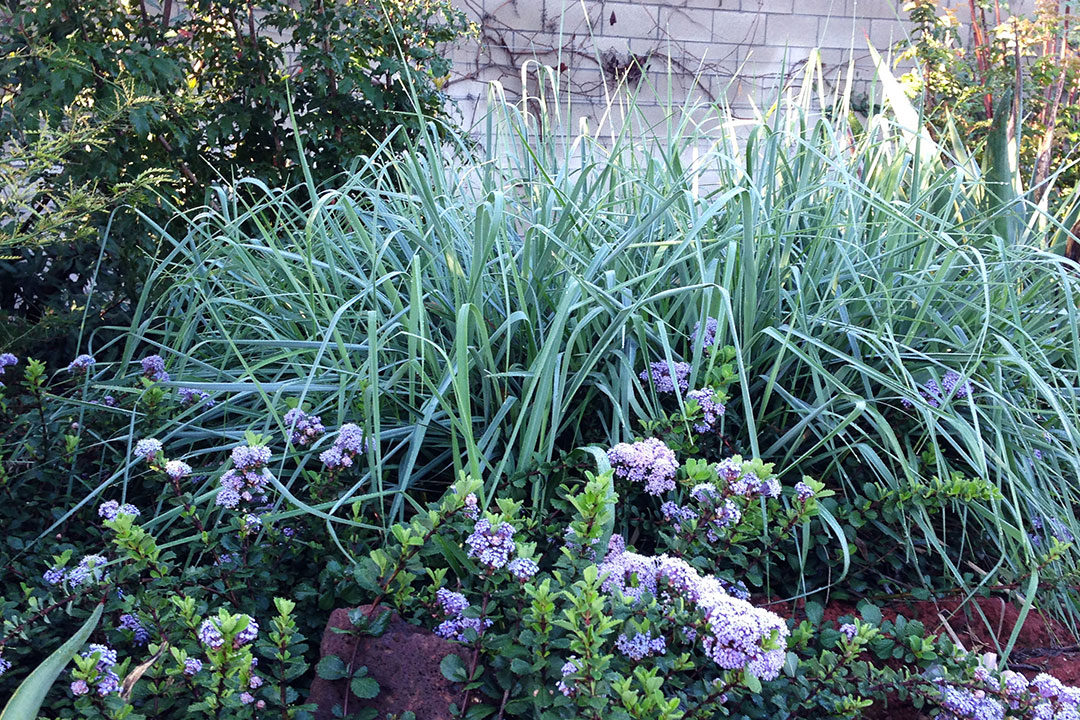
One of my favorite grasses is ‘Canyon Prince’ wild rye (Leymus condensatus ‘Canyon Prince’, Zones 7–10). This grass, like many others, has foliage that can be sharp and cutting. Before tackling it, be prepared with long sleeves, long pants, and good, tough gloves. It is not a bad idea to wear safety glasses as well to keep from getting poked in the eye. ‘Canyon Prince’ has a tendency to lie down if it gets too much shade or water. Trimming it is a good way to help it keep its upright form and give you the opportunity to pull away the dead growth that likes to gather in the center.
—Francesca Corra, APLD, is a nationally certified landscape designer and the owner of Dirt Diva Designs in Studio City, California.



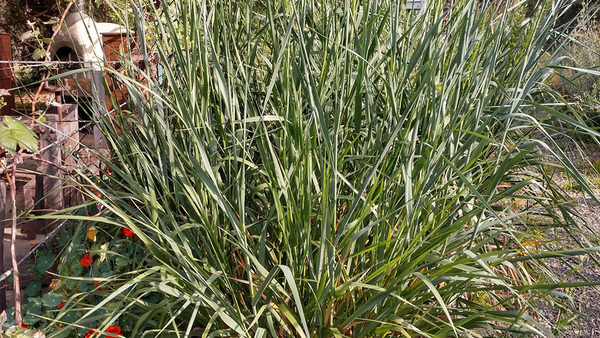














Comments
Log in or create an account to post a comment.
Sign up Log in